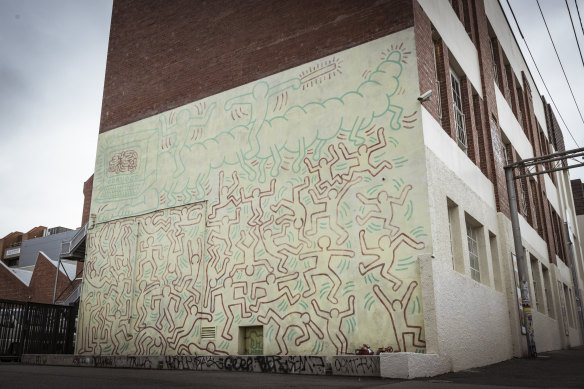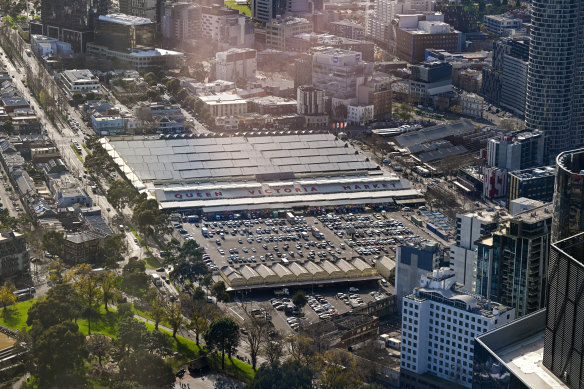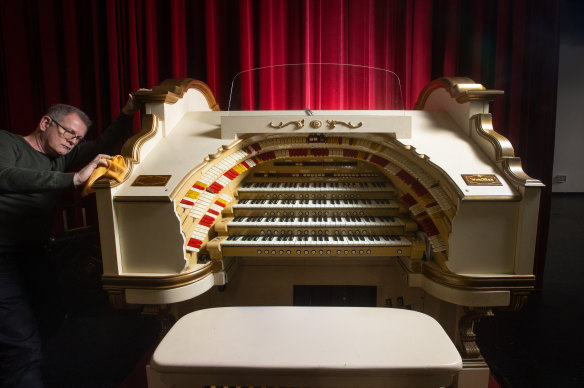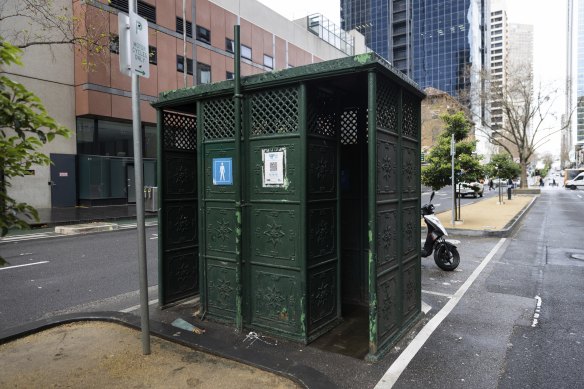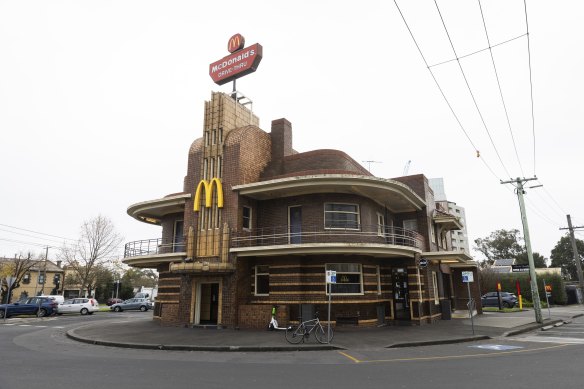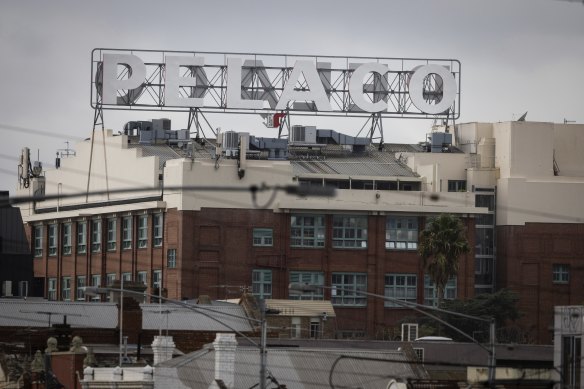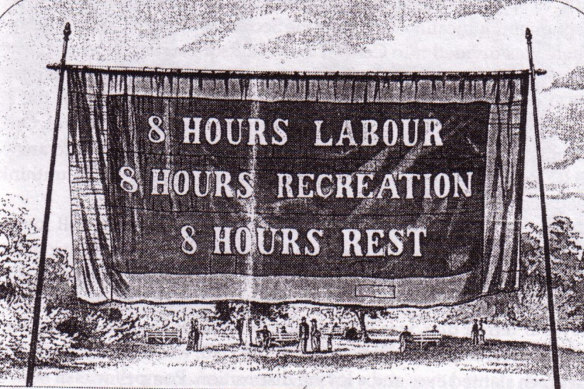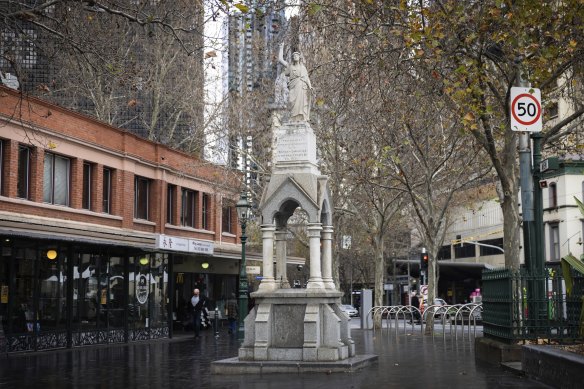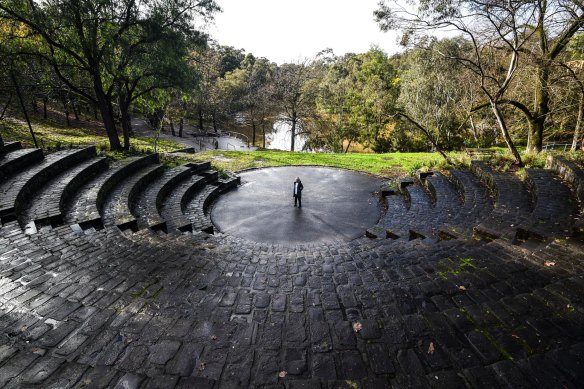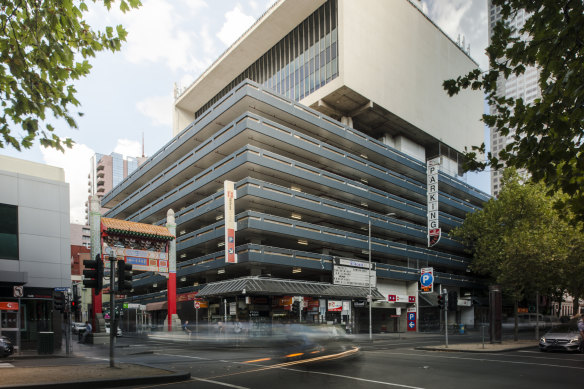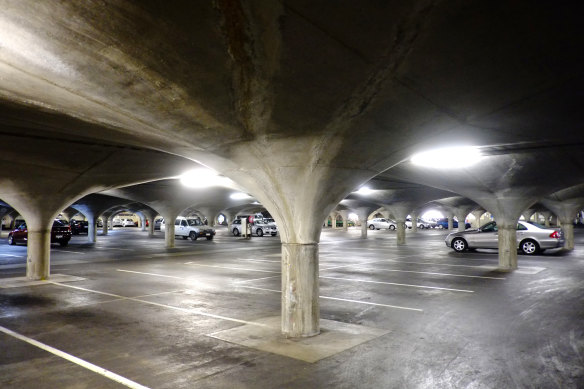Save articles for later
Add articles to your saved list and come back to them any time.
Public toilets, a mural, and a McDonald’s all have significance to the state – just ask Victoria’s Heritage Register.
It’s not only Edwardian homes or baroque architecture that we deem worthy of protection. There are some weird and wonderful things that have attracted protection.
“People might be surprised,” says architect and HLCD director Helen Lardner, the former chair of registrations at Heritage Council.
“It’s not just the big monuments that we’re celebrating. It’s having a better understanding of the everyday type heritage that means things to people.”
So, why are a pipe organ and a neon sign on the register? Justine Clark, an architectural critic and writer, explains it’s about the cultural significance.
“Often you have places and buildings that seem unimportant on the Heritage Register but have an important place in history.”
These are some of Melbourne’s curious heritage protected places and things:
Mordialloc Railway Station Water Tower
Location: Mordialloc Railway Station.
This concrete and red brick inverted cone tower once provided water to steam locomotives in the early 1900s, holding up to 20,000 gallons at a time.
The Mordialloc water tower was heritage listed last month.Credit: Joe Armao
It was built in 1910 by James Younger in a simplified Edwardian style, but only made its debut on the heritage list this year through an application by the Mordialloc and District Historical Society.
“In the past, steam trains used to pull up underneath the tower and a big snorkel would drop down and pump water into the locomotive before it drove off again, something that’s completely disappeared now,” says Peter Ratcliff from the Mordialloc and District Historical Society.
“It’s one of the last visible symbols of steam train travel on this side of Melbourne. I think it’s also a really unusual design.”
Keith Haring Mural
Location: Outside the old Collingwood Technical College Tech School, Johnston Street, Collingwood.
The Collingwood mural is one of only 31 known murals created by Haring.Credit: Chris Hopkins
In 1984, already a global star, contemporary artist Keith Haring arrived in Melbourne from New York City for a month-long visit and created an outdoor mural at the former Collingwood Technical College on Johnston Street.
The mural was added to the Victorian Heritage Register in 2004 and restored in 2013. That same year, a small door that was stolen from the bottom of the mural and was missing for 29 years was anonymously returned to Arts Victoria wrapped in black plastic.
The Collingwood mural is one of only 31 known murals created by Haring across the world.
The Queen Victoria Market Sheds
Location: Queen Victoria Market, Queen Street, Melbourne.
Ten of the 12 sheds have been restored since 2020.Credit: Joe Armao
Sheds at the Queen Victoria Market aren’t just protected by the Victorian Heritage Register, but the National Heritage Register, too.
The open-air sheds, on the site of Melbourne’s first colonial cemetery, are used by market traders and have been around for more than 145 years.
Ten of the 12 sheds have been restored since 2020, and the controversial redevelopment of the market precinct has been watched closely by Heritage Victoria.
“These sheds are steeped in history, and are at the centre of the market experience Melburnians and visitors know and love,” says Lord Mayor Sally Capp.
Kingston’s Mighty Wurlitzer
Location: Kingston City Town Hall, Nepean Highway, Moorabbin.
Constructed in 1928, the Wurlitzer Theatre Pipe Organ was ordered for the new State Theatre, now known as The Forum in Melbourne’s CBD.
Kingston’s Mighty Wurlitzer Theatre Pine Organ with one of its caretakers, James Dipnall.Credit: Simon Schluter
The organ, one of three in Australia, was purchased by the City of Moorabbin in the 1960s before it was heritage listed in 1998. The organ now resides at the Kingston Town Hall in Moorabbin, where it is played on special occasions such as citizenship ceremonies.
“What’s known now as the Kingston’s mighty Wurlitzer is a beautiful instrument, and we’ve invested a lot of volunteer hours and a lot of money into making sure that it’s maintained,” says Kingston councillor Steve Staikos.
The Old Cast Iron Public Toilets in the CBD
Location: Across the CBD including on Bourke Street and Flinders Street.
Melbourne’s first public toilets were built after complaints to the Melbourne City Council about “indecent nuisances” being committed in public places.
Cast iron public toilets in Melbourne’s CBD are heritage listed.Credit: Paul Jeffers
Made of iron and timber, the first public toilets were built directly over the city’s gutters where the waste would go into the Yarra River in the late 1850s. While many of the toilets were removed, the surviving eight toilets we see around the CBD today are heritage listed.
According to Heritage Victoria, the toilets “reflect an important era of sanitary, technological and social reform in the early twentieth century” that turned Melbourne “from a smelly, disease-ridden city to a modern metropolis”.
McDonald’s restaurant
Location: Corner of Queens Parade and Heidelberg Road, Clifton Hill.
The Clifton Hill McDonald’s was once a pub.Credit: Paul Jeffers
A heritage building adorned with McDonald’s golden arches? Yes. This 1930s jazz moderne building was once the United Kingdom Hotel. It was designed by James Hastie Wardrop, the architect behind the Shrine of Remembrance.
The pub was de-licensed in 1988 before it was turned into a McDonald’s. The burger giant had to stick with the design under heritage rules, and it underwent little modification at the change of hands as a result.
Pelaco Sign
Location: 21-31 Goodwood Street, Richmond.
The Pelaco sign in Richmond is heritage listed.Credit: Paul Jeffers
Before billboards, the popular advertising method was large-scale neon tubes like the Pelaco sky sign in Richmond, erected on top of the shirt manufactory in 1939.
Its heritage listing is in part a recognition of the rare design of the sign and an acknowledgement of the significance of Victoria’s clothing and textile industry, particularly in Richmond – once an industrial suburb.
Eight-Hour Day Trade Union Banners
Location: Melbourne Museum
Only 12 of the Eight-Hour Day Trade Union banners exist today.Credit: Wikimedia Commons/ National Museum Australia
Constructing the law school building at the new University of Melbourne in 1856, a group of stonemasons tired of their working conditions, put down their tools and marched to Parliament House.
The strike was successful and all stonemasons were granted an eight-hour workday. This was the origin of Labour Day, and just 12 banners created for the marches remain today. Eight are held at the Melbourne Museum.
Women’s Christian Temperance Union Drinking Fountain
Location: Opposite the Queen Victoria Market in Elizabeth Street, Melbourne, near the corner of Victoria Street.
The Women’s Christian Temperance Union Drinking Fountain at Queen Victoria Market.Credit: Paul Jeffers
Opposite the Queen Victoria Market is a 122-year-old granite and marble fountain that was presented to the City of Melbourne by the Women’s Christian Temperance Union to commemorate the visit of the Duke and Duchess of Cornwall and York.
Its heritage listing recognises the Temperance Movement, the biggest and most influential of the various women’s organisations in Victoria, during the late 19th century and early 20th century.
The fountain is a physical manifestation of the Union’s aim to encourage absistence and provide an alternative to alcoholic drinks.
Stork Theatre
Location: Fairfield Park, Fairfield.
Helen Madden at Stork Theatre.Credit: Justin McManus
A local attraction on the banks of the Yarra River in Melbourne’s inner north, Stork Theatre is believed to be the only Greek-style amphitheatre in Australia.
The 1984 bluestone amphitheatre was included on the heritage register last year after a community campaign to protect its future in Fairfield Park.
Other heritage listings of note:
The Total House car park with modernist offices was Lardner’s favourite item on the register.
- Strathbogie Aerial Navaid
- Loveridge Lookout
- Murtoa Stick Shed
- Dawson’s Cactus Garden
- Tide Gauge House
- CSIRAC computer
- Silkworm Farm
- Cement Creek Plantation (Redwood Forest)
- Portland Lifeboat
Lardner’s best-loved item on the Heritage Register was the Total House car park with modernist offices on the corner of Russell and Little Bourke streets, built in 1965.
The Melbourne University underground car parks, built in 1972 and featured in Mad Max, were also a favourite.
The Melbourne University underground car park is also protected on Victoria’s Heritage Register.Credit: Luis Enrique Ascui
In the future, significant items from COVID-19 or the Voice to Parliament referendum could be added to the list, Lardner suggested.
But there’s also been a focus on the women’s, LGBT and migrant-related places and objects that may have been overlooked for heritage registration in the past.
– with Rachel Eddie
Most Viewed in National
From our partners
Source: Read Full Article


